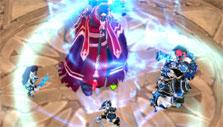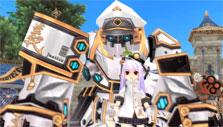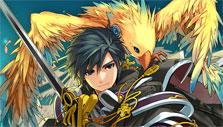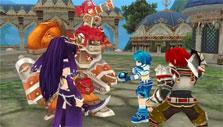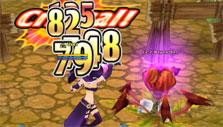Tartaros Rebirth
 by Aethyna
Nov 23, 2017 |
1
Votes |
1
Played |
0
Reviews
by Aethyna
Nov 23, 2017 |
1
Votes |
1
Played |
0
Reviews
 7
rate
Renamed as Tartaros Rebirth, this game features everything you know and love from back in the day including the adorable and very varied range of characters, the grind to level up all of them, fun story-driven campaign quests, and a vast and beautiful world with instanced locations and dungeons to explore.
Play Now
Similar Games
Played
7
rate
Renamed as Tartaros Rebirth, this game features everything you know and love from back in the day including the adorable and very varied range of characters, the grind to level up all of them, fun story-driven campaign quests, and a vast and beautiful world with instanced locations and dungeons to explore.
Play Now
Similar Games
Played
People Also Played







Summary
If you’ve been a huge fan of MMORPG, especially JRPGs, back in the 2000s, you would have heard of the anime-themed MMO, Tartaros Online. Well, after a few years of “hiatus”, the game is back once again with a vengeance! Renamed as Tartaros Rebirth, this game features everything you know and love from back in the day including the adorable and very varied range of characters, the grind to level up all of them, fun story-driven campaign quests, and a vast and beautiful world with instanced locations and dungeons to explore. Sounds like fun? Well, dive into this amazing fantasy world now and help the humans save it from vengeful gods.
Plotline
A long time ago, a massive war erupted between the gods themselves and their creation, the human race. Humanity was sick and tired of being bossed around and had risen up to resist the rule of the gods in hopes of gaining independence. However, considering how powerful gods are, this might not have been such a good idea after all even if humans do have magic on their side.
Nevertheless, despite all odds, the humans managed to secure an unexpected victory. Gods being immortal beings cannot be slain and hence, the most powerful magicians in the world constructed a magical prison to lock them away forever. Peace spread across the realm and humanity prospered.
However, as time goes pass, the seals around the prison weakened and the gods are on the verge of breaking out... naturally, the first thing on their minds is to get revenge on the very people who had put them away. With a potential war brewing in Tartaros, heroes from all corners of the world have gathered to fight the good fight yet again. Maybe this time around, you will be able to not only save the world from these gods but also to banish them once and for all.
Gameplay
To begin your epic journey, you’ll first need to choose a server and then a channel. Unless you plan on playing with friends, it really doesn’t matter which server you choose, but I would recommend choosing one that has a moderate population rather than a high or low one.
Once done, you can create your family name. This is a pretty weird aspect of the game mainly because of its unique character system. Unlike most MMORPGs where you get to create and customize your own hero/es to play as, all the hero characters in this game (up to 9 of them) are pretty much fixed in appearance and in name. You won’t have access to all of these characters at once though. Instead, you will gradually unlock more characters as you play... and boy! There are plenty – and I do mean plenty – of characters that you can unlock.
Each hero is leveled up independent too, so you can definitely expect a lot of grinding. However, when it comes to skill points, the game has a rather interesting system in place – the skill points which can be used to unlock new skills or upgrade existing ones are shared across all characters. This explains why you earn a ton of skill points rather easily. There are plenty of skills that you can eventually unlock since you’ve got 3 tiers of them, some of which are even passives.
Aside from skills and skill points, there are also multiple phases you can then unlock for each character. Phases in this game work somewhat like “Poses” or “Sub-Roles” in certain MMOs. You can switch between them depending on which “Phase” you need. Each phase will provide its own set of buffs that will help you fit your sub-role be it a crowd control specialist or a massive single-damage dealer. This is slightly different from the subclasses in this game that will instead work to further expand each character’s chosen job, allowing you to really specialize your heroes, permanently.
Another interesting point to note is that the game allows you to switch between characters really easily... in fact, it’s somewhat similar to character switching in the game, King’s Road, but it’s a lot easier since all you need to do is click on a button, choose a character you want and voila, it’s done! This little switching mechanism actually allow you to use the strength of your higher-level characters to level up the lower-level ones.
How does this work? Well, questing in this game will mainly involve only one of your many characters and as such, that character will be gaining all of the experience points while you’re slaying monsters at the questing location. You can’t really switch characters in dungeons or quest sites either. However, you do so while you’re in town right before you turn in the quest.
So, in other words, you can use your higher-level characters to do all the hard work of clearing mobs, and then send the quest experience to a lower-level character by turning in the quest using that said character. It’s not exactly dual-boxing or multi-boxing, but it’s a rather convenient way for players to level up a new character they have just unlocked.
Now, to feed the leveling grind machine, you’ll have a wide range of different types of quests to do. There are the standard and repeatable quests, which have multiple difficulty levels and only requires a single hero to do, while there are also special campaign quests that can only be completed in a party of 3 heroes – you get to choose which heroes to field. Each party will have a leader which you, again, get to appoint, and since you can’t really play all 3 characters at once, you’ll only be playing the leader hero while the other heroes in the team are controlled by the AI/ automated. There is also a fatigue meter for each character that will gradually fill up whenever you complete any common or repeatable quests so you can’t really grind an insane amount of hours a day.
Questing in this game feels a lot like Dragon Nest mainly because all of its locations are instanced and that its questing locations are separated into segments which are connected via portals. These portals are inactive until certain criteria are met. Some segments even have multiple portals for you to go through, and depending on your questing needs, you might need to backtrack a bit just so you can get all the quests done.
All of these features aren’t too bad for a revived MMORPG, but I do have a bone to pick with the game when it comes to the controls and combat system. The default controls are just terrible. It is set to keyboard mode where you use the arrow keys to move and the alphabet keys to use abilities. There is, thankfully, a mouse mode that you switch to, but you might still need to rebind quite a number of keys before you can play the game in a manner that you’re more comfortable with.
The combat system, on the other hand, doesn’t really fare any better than its controls and it really shows the age of the game. The combat animations look rather dull (not as flashy) and feel incredibly clunky. Fights are semi-action-based where the direction your character is facing is very important if you want to deal a blow. Although there is a combo effect, there is no tab-targeting and auto-combat, or sprints, dashes, active blocks, or dodges.
However, the game does spawn a lot of enemies for you to fight and it is crucial to avoid getting surrounded by them while your area-of-effect skill is on cooldown. This is mainly because once an attack animation starts, you can’t really cancel it in this game. So, your character might be ready to deal a blow, but he might be getting hit multiple times from behind and the sides.
Boss fights are mostly pretty challenging too, but for these, you can often skip fighting the spawned minions and go straight for the boss himself. Once the boss is dead, all the minions will drop dead as well. Bosses will often pop up at the end of a quest instances, but you can find them in the game’s 27 team-based (co-op) PvE dungeons too. The game even has a PvP aspect, but like most JRPGs, they tend to put PvP on the backburner and only introduce this game mode once you reach a much higher level.
Being a freemium game, Tartaros Rebirth has an in-game shop that sells a wide range of items, including growth packages that basically contain experience boosts, cosmetics and costumes for your characters, enhancement stones to upgrade your gear, and also more G-coins, the game’s premium currency.
Community
Tartaros Rebirth is a pretty social game and as such, the guilds in the game play a rather important role in providing a significant part of the gaming experience, such as being able to quickly find enough players and easily coordinating with them to raid a dungeon.
By being a member of a guild, you’ll be expected to contribute to the guild’s cause by helping to farm for fame (which works like “reputation”) with various town and cities. The contribution rank of each guild will then determine the rewards your guild gets.
Graphics/ Sound
From the get-go, it is obvious that graphics quality isn’t exactly Tartaros Rebirth’s strongest suit. The game still retained its old school-like graphics which might be good back in the 2000s but looks rather poor in this time and age. This is one of the main factors that may deter new players from trying the game out, unless you are playing the game for nostalgic purposes of course. The music, voice acting, and the sound effects are timeless though.
Conclusion
In short, Tartaros Rebirth is a rather old-school-looking, anime-themed MMORPG that has a really unique character system which reminds me of King’s Road while the gameplay itself reminds me a lot more of Dragon Nest, albeit with poorer graphics. The storyline is pretty interesting as well, though most of the story is conveyed via text which I’m sure many players will just skip through.
Considering that there are plenty more epic and new MMORPGs out there like Lineage II: Revolution, I can’t really see why new players would like to try this game out. It is more of a game that will appeal to fans of Tartaros Online. That being said, if you’re curious about the game or if you just love playing anime MMOs, this is a rather entertaining, in a grindy sort of way, game to play.
Tartaros Rebirth Blog
New Game Added: Tartaros Rebirth
 by Aethyna
Nov 23, 2017
by Aethyna
Nov 23, 2017

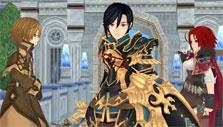
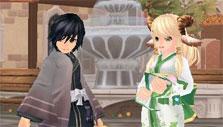 Read More
Read More
Featured Games
 Realm of Warriors
Assemble a party of the strongest heroes to take on both the rebel forces and the corrupting influence of the Dragon Demon in this Chinese-themed browser MMORPG, Realm of Warriors!
Realm of Warriors
Assemble a party of the strongest heroes to take on both the rebel forces and the corrupting influence of the Dragon Demon in this Chinese-themed browser MMORPG, Realm of Warriors!
 RAID: Shadow Legends
Recruit the best to join your team and take on Siroth, the Lord of Darkness himself!
RAID: Shadow Legends
Recruit the best to join your team and take on Siroth, the Lord of Darkness himself!
 Hustle Castle
Save the king and his daughter from the abyssal lord as he threatens to destroy your kingdom and marry your bride to be in this fun mmo simulation game.
Hustle Castle
Save the king and his daughter from the abyssal lord as he threatens to destroy your kingdom and marry your bride to be in this fun mmo simulation game.
 Dark Genesis
Play Dark Genesis and save the world from destruction with your allies.
Dark Genesis
Play Dark Genesis and save the world from destruction with your allies.
 War Robots
Head into the cockpit of a mech and decimate opponents in War Robots.
War Robots
Head into the cockpit of a mech and decimate opponents in War Robots.
 Blade of Kings
Blade of Kings is an idle RPG by Esprit Games. You’ll take a role of a warrior, defending the land from hordes of monsters and attempting to rise in rank in the kingdom. Take part in action-packed idle battles, use a variety of skills, raise pets, and achieve victory.
Blade of Kings
Blade of Kings is an idle RPG by Esprit Games. You’ll take a role of a warrior, defending the land from hordes of monsters and attempting to rise in rank in the kingdom. Take part in action-packed idle battles, use a variety of skills, raise pets, and achieve victory.






